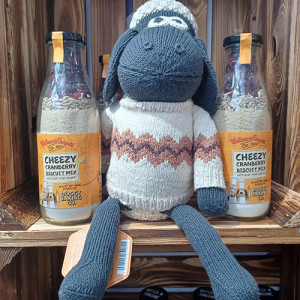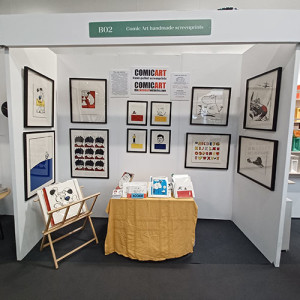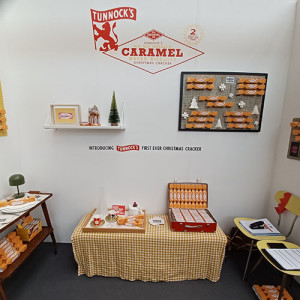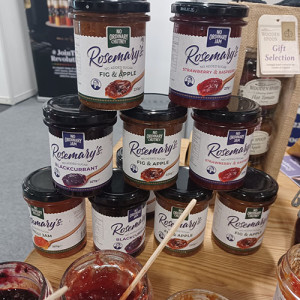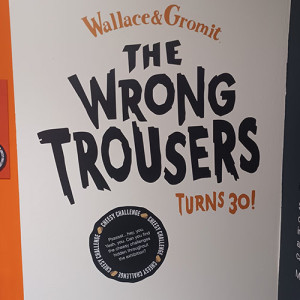Start Licensing’s Ian Downes reports back from Top Drawer and the Speciality & Fine Food Fair this week.
The trade show roadshow has sped on for me in recent weeks.
After Autumn Fair, I did the double and scored a 2-for-1 offer by taking in two trade shows at Olympia on the same day.
I visited Top Drawer and the Speciality & Fine Food Fair. As always I was on a dual mission – meeting some of our existing partners that were exhibiting and scouting out potential new licensees. In addition trade shows give me an opportunity to look at latest developments and trends. I think this aspect of a trade show can be undervalued and it is an attribute that isn’t difficult to replicate in other ways outside of more structured research.
Top Drawer is a show that is traditionally licensing light, but in recent years I have seen more examples of licensing on show there. Often the licensing examples at Top Drawer feature IP that isn’t from the mainstream or if it is the licensees are using IP in new ways often in new categories.
A good example of this is Aardman licensee Chunki Chilli which was showcasing its hand knitted range of characters include Shaun the Sheep and Feathers McGraw. The range looked top drawer and received a great response from show visitors. It is the type of product well suited to independent and specialist retailers. It was also interesting to see Chunki Chilli and the Bottled Baking Company taking advantage of the fact that they were show neighbours and both Aardman licensees. The Bottled Baking Company featured a knitted Shaun on its stand. Good to see licensees cooperating!
It was good to see that the Giftware Association was showcasing Gift of the Year at Top Drawer like they it done at Autumn Fair. It had curated a space which featured Gift of the Year Award winners and promoted the awards. I think the Gift of the Year Awards are a great showcase for the gift industry and the Giftware Association has used the awards in a really proactive way to shine a light on the industry.
It was good to see licensees such as State of Bliss at Top Drawer. Full marks for its novel stand – an eco friendly approach to stand building with the display ‘boards’ being made up of wooden hurdles. Its range includes licences featuring Rick Stein and Nadiya Hussain. Both ranges were well presented and have a contemporary feel to them.
It was also good to see screenprinter Comic Art at Top Drawer. It has been a long-term licensee and was using Top Drawer to connect with new retailers. It was good timing for it I think, as retailers seem more interested in wall art, screenprints and framed art these days – a trend driven by the growing interest in pop culture and comic art in general.
Featured brands included Moomin, Asterix, Thelwell and The Beano. Comic Art works with original artwork, but then adds its design twist to the art with new colourways, crops and design touches. It is a very effective way of reusing classic artwork.
It is always good to meet a new company and particularly one that has taken an original approach to licensing. Harrow and Green was showcasing a range of Christmas Crackers featuring the iconic brand Tunnock’s. Harrow and Green has developed a Tunnock’s Christmas Cracker. Each cracker contains two Tunnock’s Caramel wafer biscuits and a tissue party hat. The crackers are constructed from high quality card and feature the distinctive Tunnock’s branding. It is a really good example of a company using a brand licence well and embracing its heritage fully. It is also a really fun product and I am sure for Tunnock’s it is pleased to see its brand featured in this category. It helps reinforce the heritage and also puts it at the centre of family celebrations building brand engagement.
From a trade show perspective Harrow and Green presented the products really well and used the Tunnock’s branding well to deliver a really eye-catching stand. Tunnock’s seems to be a brand which recognises the potential licensing and brand collaboration can bring, but is also very circumspect about how and when to deploy these kind of partnerships. It seems to be a ‘less is more’ kind of approach and also it is very consistent in its approach – the brand is the star.
The Speciality & Fine Food Fair showcases a range of food and drink companies from start ups through to trade bodies representing specific sectors or countries. Many brands use this show and other similar ones to launch their brands particularly if they are targeting independent distribution into outlets such as delis, cafes and farm shops. It is a good show to connect with producers and to look at trends in the industry.
One exhibitor that caught my eye licensing wise was The Wooden Spoon Preserving Company. It was showcasing a range No Added Sugar jams, chutneys and relishes developed with TV chef Rosemary Schrager. The range presented under the Rosemary’s brand name alongside The Wooden Spoon brand. The range has a really authentic feel to it.
I believe Rosemary Schrager is based near The Wooden Spoon Preserving Company, so there is a local fit but perhaps even more importantly Rosemary Schrager is very passionate about the No Added Sugar aspect of the product. Rosemary has diabetes and is an advocate for a reduced sugar diet, but also products that are still full of flavour. That was a key driver in developing this range and taste wise the partnership seems to have succeeded. It is a really good example of a licensed range being developed from a well considered start and having a purpose behind it.
Outside of the trade show arena and thinking about one of BLE’s themes this year – namely experiential licensing – it was good to see The Cartoon Museum launch its Wallace & Gromit The Wrong Trousers Turns 30 exhibition. The exhibition blends story boards, props and interviews well – many of the storyboards are being shown publicly in the UK for the first time.
It is a great example of how a specialist museum like The Cartoon Museum can successfully deliver an exhibition in collaboration with the IP owner and how unique content can be leveraged by museums to deliver an engaging exhibition. It was also good to see how the Cartoon Museum’s retail team has embraced the opportunity and bought into the brand, delivering a great range of licensed products to support the exhibition. In this case this is a great example of how merchandise can help complete the fan experience at an exhibition like this and also become an extension of the exhibition – fans love to see well crafted licensed products especially when displayed together.
Finally, a shout out to Laura and Keith at BLE. I was one of the speakers at the recent BLE Retail Mentoring Day. The event was attended by around 80 retail buyers and was part of an ongoing learning programme delivered by BLE. This is a great initiative and a really positive way of bring licensing alive for retail buyers. BLE should be applauded for this programme and hopefully it will help us all get the licensing message across to retail buyers.
Many of the buyers on the course will be at BLE and I am sure the course will have helped them put licensing into more context for them.
Ian Downes runs Start Licensing, an independent brand licensing agency. His Twitter handle is @startlicensing – he would welcome your suggestions for what to look out for.








